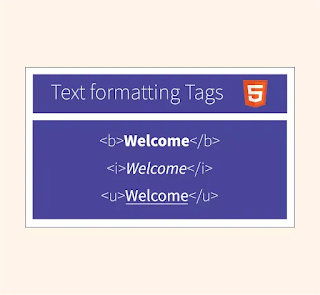HTML lists are a way to organize content on a web page by grouping related items together. They provide an easy and effective way to present information in a structured format, making it easier for users to read and understand the content.
Lists are commonly used in many different types of websites, including e-commerce sites, news sites, and educational sites. For example, an e-commerce site might use lists to organize product categories or display related items that customers might be interested in. A news site might use lists to present news articles or blog posts in a specific order, such as by date or popularity. An educational site might use lists to organize course materials or display important information for students.
In addition to their functional uses, lists can also be styled using CSS to create unique and visually appealing designs. This can help to enhance the overall look and feel of a website and make it more engaging for users.
Overall, HTML lists are an important tool for web developers and designers to use in order to create organized and structured content on a web page. By using lists effectively, they can help to improve the user experience and make information more accessible and easy to understand.
HTML provides two types of lists, ordered and unordered lists, that can be used to organize content on a web page.
Unordered Lists
Unordered lists are used to group items that don't have a particular order or sequence. They are created using the <ul> tag, with each list item represented by the <li> tag. Here's an example of an unordered list:
This will produce a bullet point list of three items:
- Item 1
- Item 2
- Item 3
Output
Ordered Lists
Ordered lists are used to group items that have a specific order or sequence. They are created using the <ol> tag, with each list item represented by the <li> tag. Here's an example of an ordered list:
This will produce a numbered list of three items:
- First item
- Second item
- Third item
Output
Lists can be nested inside other lists to create more complex structures. For example, you can have an ordered list that contains unordered lists, or vice versa. Here's an example:
This will produce an ordered list with a nested unordered list:
- First item
- Second item
- Subitem 1
- Subitem 2
- Third item
Lists can be styled using CSS to change the appearance of the bullets or numbers, or to add additional spacing between list items.
Description lists:
HTML description lists are used to display a list of terms and their corresponding definitions. They are created using the <dl>, <dt>, and <dd> elements.
Here is an example:
Output
Description lists are commonly used for glossaries, dictionaries, and other situations where a list of terms and their definitions need to be presented in a structured manner on a webpage
Projects
Famous People List - Create a list of famous people from a certain field (e.g. science, art, music) using an unordered list. Each list item should include the person's name and a brief description of their achievements.
Grocery List - Create a simple grocery list using an unordered list. Each list item should represent a different grocery item, and you can use nested lists to group related items together (e.g. fruits, vegetables, dairy, etc.).
Travel Itinerary - Create a list of places to visit on a trip using an ordered list. Each list item should include the name of the place, the date of the visit, and a brief description of what to do or see there. You can use nested lists to group related places together (e.g. cities, national parks, landmarks, etc.).
- Create a description list with three terms and their corresponding definitions related to programming languages.
- Add a description list to your webpage with two terms and their definitions related to computer hardware.
- Write the HTML code for a description list with four terms and their definitions related to sports.
- Create a description list with at least three terms and their definitions related to food and cuisine.
- Add a description list to your webpage with two terms and their definitions related to mobile app development.
- Write the HTML code for a description list with five terms and their definitions related to data science.
- Create a description list with at least four terms and their definitions related to environmental conservation.
Happy Coding!







No comments:
Post a Comment